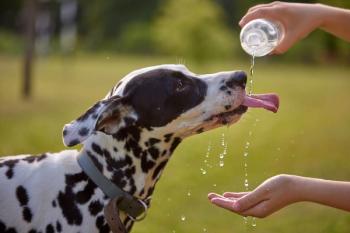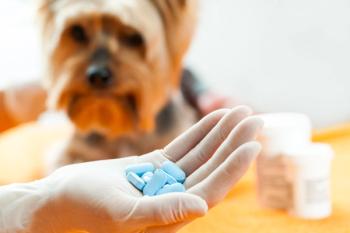
Diagnosing intestinal dysbiosis
Jörg M. Steiner, DrMedVet, PhD, DACVIM (SAIM), DECVIM-CA, AGAF, talked about the pros and cons of various methods for diagnosing patients with dysbiosis in his lecture at the 2024 New York Vet Show
Dysbiosis, a condition where the microbiome is altered, can be difficult to diagnose. In his lecture “Dysbiosis in Small Animals—What Do We Know,” Jörg M. Steiner, DrMedVet, PhD, DACVIM (SAIM), DECVIM-CA, AGAF, regents and university distinguished professor of small animal internal medicine and Dr Mark Morris chair in Small Animal Gastroenterology and Nutrition at the Texas A&M University department of small clinical sciences, talked about the intestinal microbiome, and the diagnosis and treatment of intestinal dysbiosis.
Presented at the 2024 New York Vet Show in New York, New York, the session began with an explanation of what dysbiosis is.1 Steiner explained that the umbrella term “intestinal dysbiosis” encompasses various intestinal conditions in cats and dogs:
- Antibiotic-responsive diarrhea (ARD): Diarrhea improves with antibiotics like metronidazole
- Tylosin-responsive diarrhea (TRD): Steiner noted that it is unknown if TRD is the same ARD, as tylosin is an antibiotic that also has an immunomodulator function. Whether the diarrhea improves because tylosin is an antibiotic or because it is an immunomodulator is not known
- Small intestinal bacterial overgrowth (SIBO): It is uncertain if SIBO is a real condition, as the current tools utilized are not sophisticated enough to evaluate the intestinal microbiome
“…we just came up with the term ‘intestinal dysbiosis,’ because it sort of summarizes all [of these conditions] without knowing whether all of these things are, in fact, the same thing,” said Steiner during his lecture.
Clinical signs
“The clinical signs [for intestinal dysbiosis] are like for any other [gastrointestinal] (GI) disease,” explained Steiner. These signs include chronic intermittent diarrhea and, if the condition has persisted, weight loss. Patients may also have additional clinical signs that are caused by the underlying cause of the dysbiosis.
Diagnosis
So how is intestinal dysbiosis diagnosed? According to Steiner, historically, a quantitative culture of duodenal juice was, and still is, considered the gold standard for evaluating the intestinal bacterial ecosystem. However, as Steiner explained, it is now understood that this method fails to provide a comprehensive picture of the intestinal microbiota.
Additionally, duodenal juice collection often presents several challenges, and if it is successfully collected, the sample requires plating on various media and dilutions to achieve thorough species identification, which is just not efficient.1
Fecal cultures
Conducting a non-specific fecal culture has also been recommended. However, Steiner warned against this method. “A basic fecal culture will be absolutely nothing for you, because many of the bacteria that are bad are not easily culturable. And so…what you get on the fecal culture [results] are the first, let's say, 5 or 6 different species, and those could be beneficial bacteria. Those could be even the potentially pathogenic bacteria, but [it is] unlikely [that the results are] going to be your true pathogenic bacteria,” emphasized Steiner.
He explained that if, for example, a bacterial culture is done without specifically culturing for Salmonella, it will not be picked up in the culture as the microbiota of fecal matter is very complex and cannot be accessed by non-specific culture.
Measuring serum cobalamin concentration
Many bacterial species utilize cobalamin and use it up, making serum cobalamin concentration measurement a better method for diagnosing intestinal dysbiosis, explained Steiner. “The problem [with] cobalamin [is]…you cannot differentiate why the cobalamin is low. Is it low because the ilium is damaged and you can no longer absorb the cobalamin, or is it because the bacteria are stealing the cobalamin? There's no way to differentiate that,” said Steiner.
“Cobalamin is very helpful for other reasons, because it is very important to know prognostically, what's happening, but for diagnostic reasons, it's helpful to identify small intestinal disease, but it's not so helpful to identify small intestinal dysbiosis,” he continued.
Dysbiosis index
According to Steiner, the GI Lab at Texas A&M has developed polymerase chain reaction (PCR) assays that assess the fecal levels of 7 bacterial groups in addition to the total number of bacteria. These assays utilize a mathematical algorithm to report changes as a single numerical value, called the dysbiosis index (DI), according to Steiner. He explained that a negative DI suggests normobiosis, while a positive DI indicates dysbiosis.
Specifically, this index is trained to identify dysbiosis related to chronic enteropathy in cats and dogs. Overall, the dysbiosis index is a significantly more effective diagnostic tool for identifying intestinal dysbiosis compared to existing methods, according to Steiner.
Reference
- Steiner J. Dysbiosis in Small Animals—What Do We Know. Presented at: 2024 New York Vet Show; November 7- 8, 2024; New York, NY.
Newsletter
From exam room tips to practice management insights, get trusted veterinary news delivered straight to your inbox—subscribe to dvm360.






